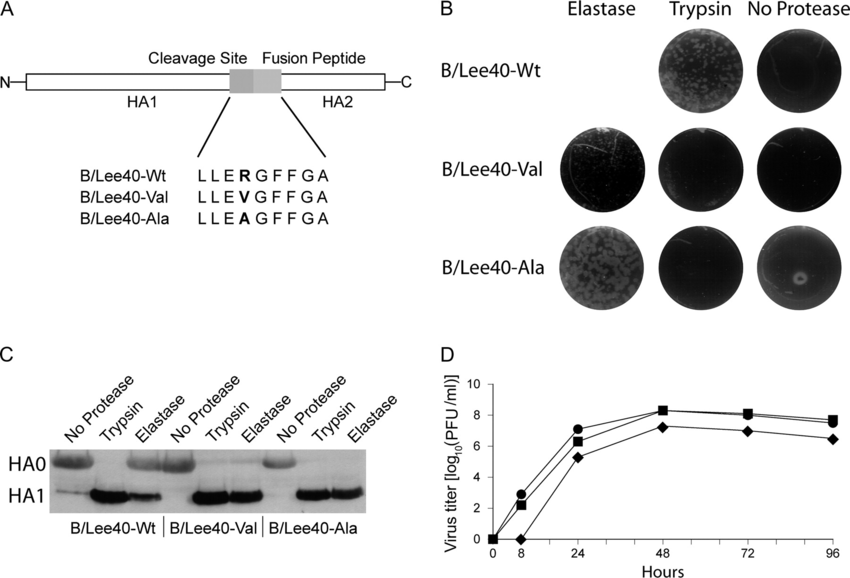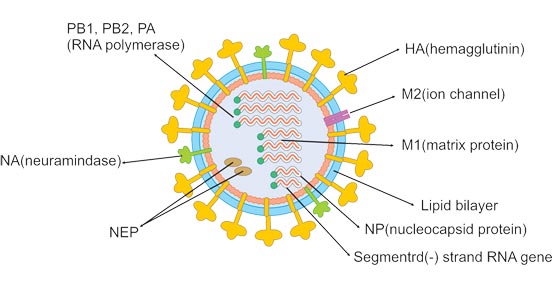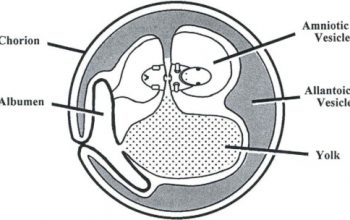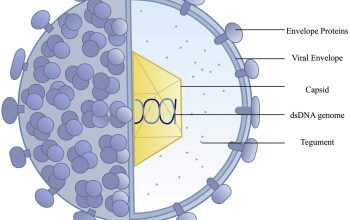Abstract
Crossing an attenuated strain of influenza B virus recombinants (B/Leningrad/14/17/55) subjected to low-temperature passage with a virulent strain of influenza B virus (B/England/2608/76) produced recombinants. similar in the antigenic specificity of their hemagglutinin (HA) and neuraminidase (NA) to strain B/England/2608/76, but possessing a similar RCT37.5 marker to the attenuated donor.
Analysis of the genome composition of 2 recombinants has shown that they inherited the genes encoding the P(1, 2, 3) and M(7) proteins from the attenuated parent, but the genes encoding the HA(4), NA (6), NP (5), and NS (8) virulent parent proteins. All recombinants were shown to be reactogenic for adult volunteers without pre-existing antibodies against the corresponding HA (less than or equal to 8); however, they had reduced immunogenicity compared to the parent viruses.

Nomenclature of influenza viruses
CDC follows an internationally accepted naming convention for influenza viruses. This convention was accepted by the WHO in 1979 and published in February 1980 in the Bulletin of the World Health Organization, 58(4):585-591 (1980). The approach uses the following components:
1. The antigenic type (for example, A, B, C, D)
2. The host of origin (for example, pigs, horses, chickens, etc.). For viruses of human origin, no designation of host origin is given. Consider the following examples:
- (Example of duck): avian influenza A(H1N1), A/duck/Alberta/35/76
- (Human example): seasonal influenza A(H3N2), A/Perth/16/2019
3. Geographic origin (for example, Denver, Taiwan, etc.)
4. Strain number (eg, 7, 15, etc.)
5. Year of collection (for example, 57, 2009, etc.)
6. For influenza A viruses, hemagglutinin and neuraminidase antigen description is provided in parentheses (eg, influenza A(H1N1) viruses, influenza A(H5N1) viruses)
7. The 2009 pandemic virus was given a different name: A(H1N1)pdm09 to distinguish it from seasonal influenza A(H1N1) viruses that were circulating before the pandemic.
8. When humans are infected with influenza viruses that normally circulate in pigs, these viruses are called variant viruses and are designated by the letter “v” (eg, an A(H3N2)v virus).

Influenza vaccine virus
Seasonal influenza vaccines are formulated to protect against influenza viruses that cause epidemics, including an influenza A(H1N1) virus, an influenza A(H3N2) virus, an influenza B virus/lineage Victoria and an influenza B/Yamagata lineage virus. Receiving a flu vaccine can protect against these viruses, as well as other flu viruses that are antigenically similar to the viruses used to make the vaccine. Information about this season’s vaccine can be found in Preventing Seasonal Flu with Vaccination.
Seasonal flu vaccines do not protect against influenza C or D viruses or against zoonotic (animal-derived) influenza viruses that can cause human infections, such as avian influenza virus variants. In addition, flu vaccines will NOT protect against infections and illnesses caused by other viruses that can also cause flu-like symptoms. In addition to the flu, there are many other viruses that can cause influenza-like illness (ILI) that spread during the flu season.




